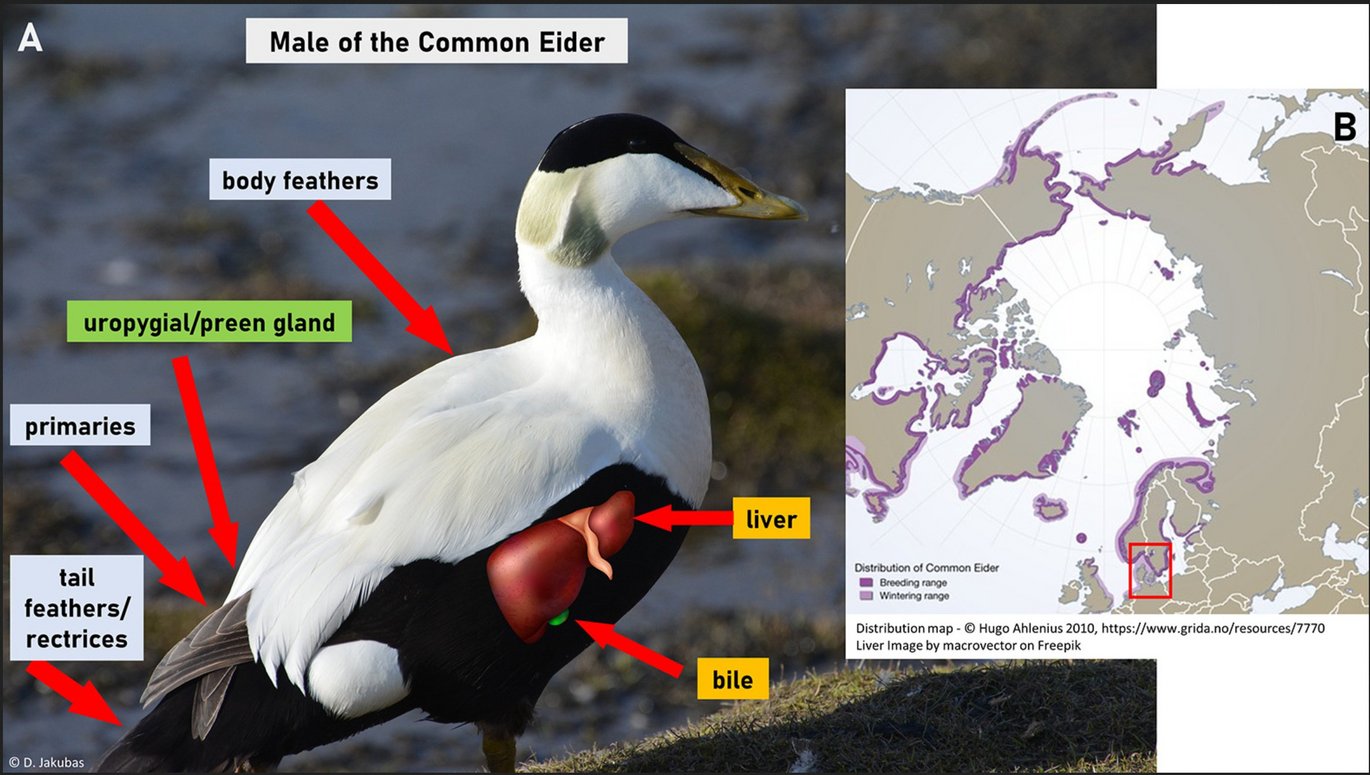Exploring avian exposure to parent polycyclic aromatic hydrocarbons (PAHs): Using the common eider Somateria mollissima in a global context
New publication by Aneta Dorota Pacyna-Kuchta, Juliana Souza-Kasprzyk, Svend Erik Garbus, Igor Eulaers, Christian Sonne, Dariusz Jakubas

Abstract:
Compared to other organic contaminants, birds are rarely studied for their exposure to polycyclic aromatic hydrocarbons (PAHs), mainly due to their effective metabolization of parent PAHs. However, as some studies suggest, exposure to PAHs may result in adverse health effects including decreased survival, especially following oil spills. In the present study, we analyzed samples from a sea duck, the common eider Somateria mollissima including feathers, preen oil, blood, liver and bile, to evaluate whether non- lethally collected samples could be reliably used for avian biomonitoring strategies. Phenanthrene was the only individual PAH detected across sample types, with the highest concentration found in preen gland and the lowest in blood. Significant differences in concentrations were observed between bile vs preen gland and liver vs preen gland, while for most compounds neither blood nor feathers showed detectable levels of parent PAHs. Therefore, the utility of those sample types for PAH exposure assessment may be limited and should be interpreted with caution, moreover as several physiological factors may affect them. Additionally, we also provide a comparison with the available literature to review current avian PAH exposure assessment and outline future research focused needs.
